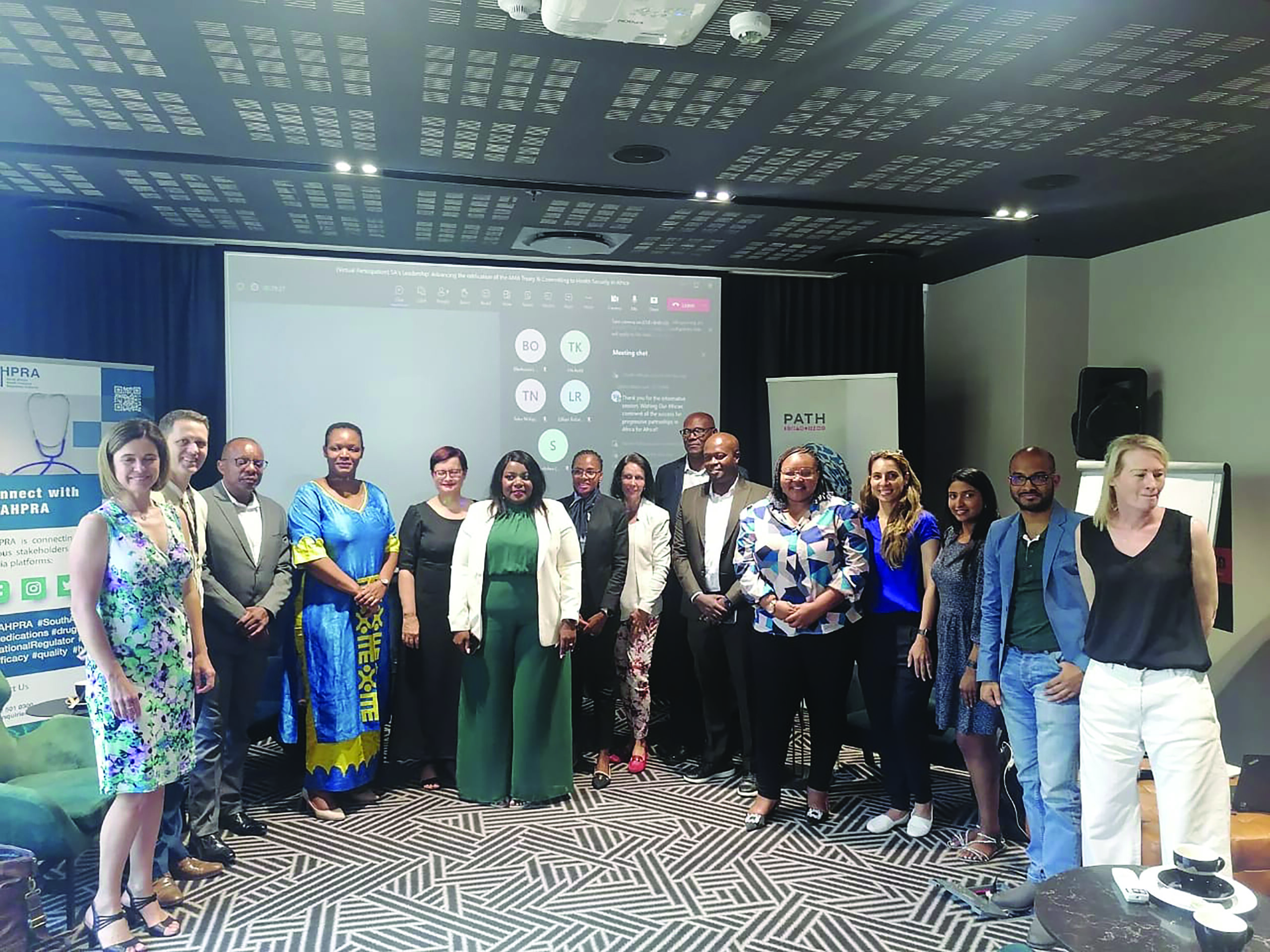Marcia Zali
African health experts gathered in Johannesburg, South Africa, to strategise on Africa’s local manufacturing of pharmaceutical and health products.
During the two-day strategy meeting, the experts also looked at some of the challenges that prevented local manufacturing from taking off at a larger scale on the continent.
Africa currently spends more than $14 billion on pharmaceuticals every year but only 30 percent are locally manufactured products while less than five percent of them are sold globally.
This means that a bulk of pharmaceutical products like medicines are imported into the continent.
On the other hand, between 2020 and 2022, Africa received commodities worth $6.9 billion from the Global Fund.
Despite being the Global Fund’s largest market, suppliers from the region only lead in the distribution of goods from the hub to their final destination, which only constitutes two percent of the procurement, supply chain management value.
The Executive Director at the African Constituency Bureau (ACB) for the Global Fund, Josephat Kakoma, said the engagement with stakeholders on the continent was to ensure that their strategy on market shaping and local manufacturing aligned with that of the Global Fund’s 2023 to 2028 strategy, which is currently being revised.
Kakoma explained that the Global Fund was spending up to 70 percent of its money on the African continent but up to 90 percent of commodities like treatment, tests and other pharmaceutical products were being sourced outside of the continent.
For the continent to be able to have a flourishing local pharmaceutical manufacturing industry, it is important for it to fast track the roll out of free trade, ensure the free movement of goods and people between countries and remove high tariffs that are currently a barrier to local trade, suggested Kakoma.
He further said that while plans were already underway to facilitate the establishment of a local pharmaceutical manufacturing industry, Covid-19 was an eye-opener for the continent as it found itself relying on the West for vaccines and diagnostics.
“What the continent is now thinking is that these things must now be produced within the continent so that if we have another pandemic, it won’t come and damage our continent. We will better manage it because we will be the ones producing the vaccines, we will be the ones producing whatever else we need,†Kakoma said.
The conversation came at the right time, said the Principal Policy Specialist at African Union Development Agency (AUDA-NEPAD), Chimwemwe Chamdimba.
The AUDA-NEPAD is one of the bodies that are spearheading the implementation of the Pharmaceutical Manufacturing Plan for Africa (PMPA) which was adopted by the AU over a decade ago and was adopted under the NEPAD framework.
Some of the pillars of this framework include policy and regulation, human capacity development, infrastructure that will be required to advance pharmaceutical manufacturing, research and development, free trade amongst countries and an open market in the continent for the pharmaceutical manufacturing to work.
Chamdimba further elaborated on some of the inroads that have been made to create an enabling environment for local manufacturers.
“We have been spearheading the implementation of the African Medicines Regulatory Harmonisation Initiative (AMRHI) which has supported regional economic communities to harmonise the regulation of medical products,†she said.
On the formation of the Africa Medicines Agency, Chamdimba said the body was going to support harmonisation, to coordinate regulatory issues and drive the regulatory agenda across the continent.
“We are supporting technical aspects of AMA to ensure that as it takes off, we have the different technical and scientific committees to support AMA activities. Our colleagues at the AU Commission are also supporting the administrative beats of AMA,†she said.
AUDA-NEPAD was also in the process of putting together a board for AMA and appointing staff including the Director General. Chamdimba added that they were optimistic about AMA taking off successfully because of the work that has already been done on the ground.
The Deputy Director General at the South African Department of Health, Dr Anban Pillay said having locally manufactured pharmaceuticals would improve access to quality and affordable medicines for people on the continent.
He also said that a unified and coordinated approach would help in the planning and also stimulate the economies of countries through job creation and improving local expertise.
“We were always told that the quality is poor, the price is too high and no capacity etc. But I think that conversation has changed and I think it is more now about how we respond to the interest to be able to do this. There is a great opportunity to take advantage of that,†Pillay said.
Even though issues around the availability of accurate data as well as intellectual property (IP) barriers being some of the challenges that were identified as contributors to why local manufacturing had not taken off, Pillay believes that local manufacturing can still be a success with the right kind of support.
“The Global Fund needs to do a lot of work to make sure that local manufacturers understand the requirement, they understand what needs to be done in order for them to be listed, and I think that can be easily achieved if there is willingness from all parties,†he said.

Your Trusted Source for News and Insights in Lesotho!
At Newsday Media, we are passionate about delivering accurate, timely, and engaging news and multimedia content to our diverse audience. Founded with the vision of revolutionizing the media landscape in Lesotho, we have grown into a leading hybrid media company that blends traditional journalism with innovative digital platforms.










